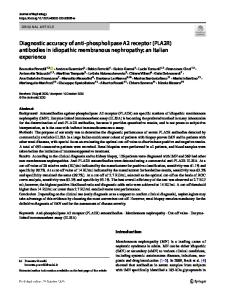Non-specific phospholipase C (NPC): an emerging class of phospholipase C in plant growth and development
- PDF / 1,337,464 Bytes
- 9 Pages / 595.276 x 790.866 pts Page_size
- 25 Downloads / 406 Views
CURRENT TOPICS IN PLANT RESEARCH
Non‑specific phospholipase C (NPC): an emerging class of phospholipase C in plant growth and development Yuki Nakamura1 · Anh H. Ngo1 Received: 6 March 2020 / Accepted: 19 April 2020 © The Botanical Society of Japan 2020
Abstract Non-specific phospholipase C (NPC) is a novel class of phospholipase C found only in bacteria and higher plants. NPC hydrolyzes major phospholipid classes such as phosphatidylcholine (PC) and phosphatidylethanolamine (PE) to produce diacylglycerol (DAG) and a corresponding phosphate-containing polar head group. Originally known as a toxin in certain bacteria to invade the host cell, this class of phospholipase has been well-investigated in bacteriology. Since the first discovery of eukaryotic NPC in Arabidopsis in 2005, this emerging class of phospholipase has received greater attention in plant biology in elucidating the biochemical characteristics and physiological function in the context of plant growth regulation and stress response. Particularly in the last few years, there has been significant progress made in understanding the fundamental character of 6 NPC isoforms in Arabidopsis, as well as novel function in other plant models. Now that research with plant NPC is entering into a new phase, this review aims to summarize recent progress in plant NPC along with some future perspectives. Keywords Lipid signaling · Non-specific phospholipase C · Phospholipase · Phospholipid
Introduction Phospholipase C (PLC) is a class of enzyme that hydrolyzes phospholipids to release diacylglycerol (DAG) and the corresponding polar head group. Phospholipase C is classified into two groups according to the substrate specificity: (1) phosphoinositide-specific PLC (PI-PLC) which specifically hydrolyzes phosphoinositides (PIPs) and (2) non-specific PLC (NPC), also called the phosphatidylcholine-specific phospholipase C (PC-PLC), which is only found in bacteria and plants and non-specifically hydrolyzes major membrane phospholipid classes such as phosphatidylcholine (PC) and phosphatidylethanolamine (PE). The role of PI-PLC is wellcharacterized in various organisms (Cocco et al. 2015; Pokotylo et al. 2014). For example, animal PI-PLCs are known to activate G protein which is responsible for the regulation of Yuki Nakamura is the recipient of the BSJ Award for Young Scientist, 2018. * Yuki Nakamura [email protected] 1
Institute of Plant and Microbial Biology, Academia Sinica, 128 sec. 2 Academia Rd., Nankang, Taipei 11529, Taiwan
calcium homeostasis. PI-PLC also plays an important role in activating protein kinase C (PKC) as the product DAG binds to PKC (Rhee and Bae 1997). In bacteria, PI-PLC was reported to be a secretory pathogenicity factor (Poussin et al. 2009). In plants, PI-PLCs play a role in plant growth (Zhang et al. 2018a, b) and stress response (Abd-El-Haliem et al. 2016; Kanehara et al. 2015; Xia et al. 2017). NPC/PC-PLC activity was first detected in a Grampositive bacteria Clostridium perfringens (Macfarlane and Knight. 1941), and later
Data Loading...











